– Hi, my name is Tony Gomez-Phillips, and I’m the horticulturist at Monona Terrace Community and Convention Center. Today, we’re gonna talk about our gardens and the process that we’ve taken to design our gardens from a conventionally gardened landscape of the past, to a forward-thinking and ecologically focused landscape for the future. Starting out our video, we take a fly-by down Martin Luther King Jr. Boulevard. And it’s a wonderful shot, lending an idea as to the site and location of the building on the Isthmus, as it relates to the Capitol. On the left and the right, you can see the Madison Municipal Building and the City-County Building. As we proceed further along this flight, we come across Olin Terrace, which is the walkway leading up to the building. And then we float over our wonderful fountain, leading and floating out over the William T. Evjue Rooftop Gardens and out towards the lake, which truly holds the greatest view of the Terrace, no doubt about it. And those of us fortunate to get that view out on the lake know how great it is.
Monona Terrace has key mandates, and those are to be an economic catalyst for the city, a community gathering place, and a tourism destination for the city of Madison, Dane County, and State of Wisconsin. For those that aren’t familiar with Frank Lloyd Wright’s Monona Terrace, it was designed by him, and it is a facility that is owned by the city of Madison, yet it was funded by funds from the city, the state, and the county. And currently, it’s GBAC STAR certified facility, which basically, it’s a standard established that we’re maintaining a cleaning, disinfection, and infectious disease prevention program to minimize risks associated with a current pandemic or any sort of infectious outbreaks. It’s also a LEED Platinum building. So the building achieved LEED Platinum status, which is quite an accomplishment for the building. And we’ll touch upon that in a second here. Typically, the building hosts 500 to 600 events a year, and this was pre-COVID, generating over $33 million in economic impact for the community. We also provide over a hundred free, low-cost community events each year. And one of my favorite quotes about this building, as we look at it on the shores of Lake Monona, as Frank Lloyd Wright said, “Monona Terrace, the long-awaited marriage between the city and beautiful Lake Monona. ” This year, we’re gonna celebrate our 25-year anniversary.
And in July, we have some wonderful events planned to mark that milestone. The building itself is over 250,000 square feet. It is a multilevel convention center, and it has curving geometric forms that converge with the breathtaking beauty of its natural environment. The building itself extends 90 feet over the lake, and the building is designed to withstand pressure from lake ice, up to 40,000 pounds per linear foot. It’s quite a strong building and quite a strong sight from the lake. In this image, we can see a nice, beautiful shot from the rooftop, kind of capturing the sun as it lands on the building in the morning hours. The terrace has planters and beds, total, and this is kind of the greenscaping of the building, equal around 61,000 square feet. So those green space areas include the William T. Evjue Rooftop Gardens, the planter ledge that’s in front of Community Terrace, Olin Terrace, which is the walkway leading up to the building, and then our lakeside planter beds. Getting back to the LEED Platinum certification, this is quite an accomplishment for a building that has already been built prior to trying to attain the certification.
The U. S. Green Building Council certifies this rating, and it’s the most widely used green building rating system in the world, which prioritizes sustainability, not only in the structure of the building, but also in its operation for improved environmental and human health performance, and it positively impacts our environmental footprint. In this image, we can see a retention pond, and that retention pond is being managed by the city of Madison to help offset the concrete hardscaping that the Monona Terrace sits on itself, the footprint that it sits on itself. So to help us kind of achieve this LEED Platinum status, we had to ensure that we were going to manage green spaces with native plants that were gonna help contribute to sustainability within the city to offset the hardscaping that the terrace itself occupies. And here’s some images that we’re seeing of some of these other retention ponds that city engineering has vouched to take care of for the next 10 years. And also a nice list of some of the plants that you can find in those spaces. I’m coming to you right now from our lecture hall, which is a wonderful space. It is a theater-style setting. And behind me, you can see the chairs, you can see to my immediate right, one of our sconces, one of our saucers that helps kind of carry on the architecture throughout the building.
We have other wonderful rooms that many clients come to use at our facility. Those include our ballroom, and then we also have our Grand Terrace that is fully available for any event, from the small is five to ten people, to over 2,000 people. We have a full catering service that provides any sort of meal plan that you would care for. And also we have a wonderful AV team that can provide any sort of production that anybody would ever want. And we have a lot of corporations and companies that come here and take advantage of that technological expertise that we carry in this building. So who is Frank Lloyd Wright? Well, in our area, he’s quite well-known. He is from the area. He was born in Richland Center in 1867, and died in ’59 at 91 years old. He was married three times, had seven children, practiced architecture for seven years, 70 years, I’m sorry, and designed over 1,100 works with over 500 completed, and around 400 or over 400 still stand. He has eight UNESCO World Heritage sites, no small feat.
And a lot of these are familiar to many of you. Fallingwater, Guggenheim, Taliesin. Some of these other ones like the Frederick Robie House, the Herbert and Katherine Jacobs House, Hollyhock House, and the Unity Temple are also located east to west, from the coasts. Hollyhock House is all the way out in Los Angeles. Obviously, the Guggenheim is out in New York. And then a lot of those are actually located here in the Midwest, where a majority of his home or majority of his life was spent. He was quite a cantankerous individual. He was notorious for ticking people off, and he certainly faced a lot of adversity from changing politicians and officials, and his controversial persona. So, needless to say, he was quite an eccentric architect, and he cared little about conventional standards. But he was quite a designer and quite innovative.
In 1938, Wright sketched a drawing as he described his dream civic center for his home state or home city. He was committed to designing a public space in his boyhood home, and pursued it for the last 21 years of his life. It was a labor of love. In this slide, we can see a conceptual drawing from the 1930s of what was then called Olin Terraces. And as you can observe it, it’s quite expansive and quite large, and nothing like the building is today. But the process went through a lot of different renderings and input sessions from parties about what the space should be or what the building should be. Here, we see the rendering by Frank Lloyd Wright from 1959, seven weeks before his death. He never lived to see it built. It was completed in 1997. So it was 38 years after his death and nearly 60 years after the original concept.
The estimated cost was around $5. 6 million. The actual cost was $67 million because it was built nearly 60 years later. And today, if you were to build it again, it would be over a $100 million to build a facility like this. So here we see a wonderful view of the lake, from the lake of Monona Terrace. And as I toggle back and forth between the image, I’ll go back once, and then go back forward again. You can see it’s pretty spot-on from his latest and last rendering. The design and the lead architect of the building was Tony Putnam, and he was a Frank Lloyd Wright pupil. And as he said, “It celebrates the look of relationships of the building “to the lake, and of man to nature. “It’s a recognition of the human wish for space, greenery, and vista.
” So when I came in to the Terrace, I asked myself, “What kind of landscape should an urban community and convention center designed by Franklin Lloyd Wright have?” And what I did know is that it should be low maintenance, it shouldn’t be the prior, which was almost all annuals and non-natives, not water and chemical dependent, drought, heat-tolerant, and plants that are tolerant to wind, which isn’t something that you normally garden for, but this can be a plus because it can capture the movement. And there certainly is a lot of wind up here. There’s a lot of movement, and that’s wonderful. So boiling that down, I really just wanted to do right by Wright. It’s a very simple saying, but it sure is catchy. And it’s a nice way to remind yourself that if you follow the principles and you listen to the architect and how nature inspired him, that you really can’t mess this up. So as Frank Lloyd Wright put it, “The good building is not one that hurts the landscape, “but one which makes the landscape more beautiful than it was before the building was built. ” So I hit the ground running, started exploring and doing a little bit of research about the gardens and landscapes of Frank Lloyd Wright, as it was completely foreign to me, and read some books. And a couple that I came across were Wrightscapes and The Gardens of Frank Lloyd Wright by Derek Fell. I also contacted and visited Taliesin and Taliesin West, out in Scottsdale, and then I was able to get in contact with the head horticulturist at Fallingwater, who was generous and shared their horticultural maintenance practices with us on their site.
And what I observed is a very naturalized approach to maintenance, and basically allowing the environs of your outdoor experience be a part of your landscape, and not to fuss too much about it. A lot of those sites really kind of elevated the natural site that they were in, and didn’t try to disturb the natural elements that surrounded those buildings. As Derek Fell put it in his book, there are some tips that are Frank Lloyd Wrightian ways to look at garden design or landscape design. And here’s just a few of them. And these are quite ahead of his time. Use of natives are vital in making the home part of the regional sighting to create interesting sculptural accents. Indigenous plants or native plants are more reliable and less maintenance than non-natives. This is something that we know now, he knew then, but it’s something that, it’s coming back around in terms of appreciating low-maintenance qualities of plants. Another is flower color among plants is secondary to texture and form. So he really appreciated the texture and form of plants, leaves, grasses, the bending reeds.
He did like flowers. He liked them for cuttings to bring them inside the house, to bring a little bit of the outside in and have that repetition from the indoors to the outdoors. He allowed trees and shrubs to grow naturally, hated hard pruning, hated meatball pruning of any sort. He created and preserved vistas, so a view of the water, a lake or river, is especially desirable. Another one is to expose a house foundation to show where it meets the ground, use sculptures as focal points. And also, don’t copy or slavishly copy other garden styles. And that’s a reference to celebrating your own locality, your own regionality, ’cause there’s value in that. So Frank Lloyd Wright’s principles at work. Simple geometry. so natural forms could be reduced to simple geometry.
Organic architecture. This is a philosophy developed by Frank Lloyd Wright, that the spirit in which buildings are conceived sees that building, the furnishings and the setting and the environment, all as one thing. And we’ll see examples of that here. Grammar, the language used to describe the architectural design of a structure. And we’ll see examples of that here too. We’re surrounded by them. And then compress and release, which is this idea that you design a space to invite the person or the individual through that space and into an opening. So you compress them in the entrance of a space to force them subconsciously, or to lead them into an area or room that is more expansive, and that’s your release. So what is Monona Terrace’s grammar? Well, our grammar is curvilinear, the design vocabulary linked with the state Capitol. Frank Lloyd Wright basically reduced the rotunda of the state white Capitol to a basic geometry.
The circle, which is the basis for designs. So the Capitol influenced the symmetrical design as well, which was not common for Frank Lloyd Wright. In addition, he also wanted to make sure that he had the same color as the Capitol, or at least approximate. And we do share the same off-white tone, shall we say. But the grammar is circles and arcs and saucers and curves and arches, all curvilinear. Here’s a good example here. Here’s a shot of the fountain with the dome in the back, and you can see the rounded shapes and forms in this image almost framed by the blocked buildings that are framing this shot on the side. Two very different. . .
Two very different shapes. At night, we do have many events. We have Dane Dances and Concerts on the Roof, and Shake the Lake during the 4th of July, events like Moon over Monona. So those are wonderful times to come visit us at night. So here’s another example of the curvilinear design grammar that’s being used in the building. Here’s our east rotunda. And then, if we kind of climb a few stairs and we look down, here we’re looking down at multiple levels of that same exact space, and it has a little bit of a Guggenheim feel to it. And our grand entrance on level four, this is leading into our promenade. And although this is pretty grandiose, you do walk straight through in between those two saucers and spires into a smaller hallway that then opens up into our grand terrace. In addition, all of that is tied into other elements in the building.
Here’s a shot of the carpet that is designed to copy and mirror that curvilinear architecture that you see in the building in forms, and even up to our chairs that we use for the building, all have this circular grammar and language to it. So let’s talk about the William T. Evjue Gardens, a name for a garden that is hardly known. Everybody talks about the Monona Terrace rooftop, but we do have a name, and it is the William T. Evjue Gardens that are considered the crown jewel of Monona Terrace. Now I’ve taken this and run with it, and tried to create a space that is worthy of that moniker, and try to bring some design to that. Prior to me arriving 17 years. . . Prior to the 17 years that the building was in existence, most of the work was done by contracted landscape help.
And in 2016, I was hired to bring landscape vision in house. So I knew it was gonna take some time, three to five years, to explore the paths, learn the building, get to know the microclimate, understand the resources and the logistical challenges, and really, what would Frank Lloyd Wright do, right? We wanna do right by Wright. So the shot we’re looking at now is my favorite picture I’ve ever taken while being here for the last five plus years. Here’s a shot of our East Prairie planting, our prairie plant planting, and it is just chock-full of native plants. And you can see them all, they’re dancing and crowding into each other and creating this feeling, this elegance, this exuberance of life. Because the more biodiversity an ecosystem has, the healthier it is. And so coming up, we’ll also see some images of how this native planting has increased our biodiversity here on site. Looking at the gardens here from this view, we’re looking at the roof, and we’re looking out at the lake, and you can see it’s just a large structure that is made out of concrete. And I think our nature would be to say that we see a lot of concrete, but I like to say that we see a lot of design in form and function, and a lot of opportunity to frame this with greenery. In this shot, this is the rooftop not long after it opened.
You can see the trees, you can see the open beds that have a lot of mulch planted, or I should say, thrown in between the sparse plantings, and in addition to some turf, which is actually used quite a lot around here. When I got here in 2016, the gardens were still being treated this way, in a conventional way, with a lot of block plantings of annuals and a lot of mulch that was thrown around in these open spaces to kind of keep this clean and tidy look that we all like to see. It’s a normal thing for us to want to see things tidy and kept up, and things delineated and separated. And that’s how the garden was tended. But that wasn’t always the best for the plants that you had on the site. In this image, we’re seeing a row of Monrovia junipers that are dead halfway up, mainly because the plants that were planted in front of it shaded all those branches out on the lower half of those, and caused massive branch dieback. And those will never grow back green again. So needless to say, these were ripped out maybe the second year I was here and thrown over the building. [chuckles] That was a fun day. So what do we have here for the Frank Lloyd Wright landscape that we’re looking at? We have a garden, we have a large terrace roof that is used for many events.
So to give a couple examples of the projects that we’ve done, we’ll start with our prairie plant beds, which is the first big project that I did when I got here. When I got to the Terrace, I went up to the roof, and one of the first things that hit me when I came around the corner was the fact that I couldn’t see the lake. There were some giant Norway maples that were planted, and in between them, there were a bunch of ninebarks. And essentially, it was just like this big, giant wall. There wasn’t anything that was leading me past or through that space, just that it was there. And then of course, a ton of mulch, a ton of wood mulch, and some plants that were just basically holding the space of their annual neighbors to come on down the line. So what I ended up doing after research and a lot of back and forth and figuring out what we should do with this design, because we lost two of those trees, and so the symmetry wasn’t there anymore. And to replace these old Norway maples, we were gonna have trees that weren’t gonna be quite the same size. So we cut the trees down. And we cut the trees down for a couple reasons.
One, to buy and crane trees up onto the site is incredibly costly, and then to maintain them as well is also quite costly at that size, ’cause they would’ve come in as ball and burlap trees. At the same time, in doing my research, I was interested in trying to apply some sort of principles that I had discovered to the site. And by that, basically using indigenous plants and native plants that were going to help tie the site locally and regionally to its surrounding ecology. So we were able to convince people that that was a good idea, and we took the trees down. Then we went ahead and ordered a bunch of prairie plants. And in this image, we can see this time-lapsed image of all our volunteers coming in to help us plant. And what I like about this is looking at the rain kind of dripping down the side of our east drum, kind of showing that we’re actually working and time is passing. But this was a really fun day. This was a way for us to connect with the community and to allow other people to share in building spaces for each other. None of this would’ve gotten done without volunteers.
Volunteers are everything for us here at the Terrace. We depend on them to care for plants, to water, and to come in and basically fill in holes where they’re needed, literally and figuratively, to ensure that our gardens are looking great. And so, here we have our volunteers planting part of the prairie on our east side, and then one of our young individuals that came from a corporate volunteer opportunity to take part in this. And that was a wonderful day, sharing these experiences, not only with our full-time volunteers that were here all the time, but also with new visitors, younger visitors who probably weren’t as adept with their green thumbs. And so it was a wonderful exchange. So the prairie was planted and now we look here, and we have just a wonderful, wonderful ecosystem that has kind of sprung up. And I’ll call it a tiny ecosystem. You really can’t have a big ecosystem on a 14-foot wide, over 100-foot long planter bed. But what you can do is encourage some sort of adaptability within the insect population that lives in your area to come and look at this site as a resource. So in this picture, we see a lot of wonderful spring blooming forbs, our echinacea pallida, paradoxa, we have our white flowered Parthenium integrifolium, which is wild quinine, and I love that plant.
We have liatris, which are blazing stars, and then we have some prairie docks coming back in the background there. In this picture, we’re looking at the same shot of the prairie. However, this was taken around June, late June, early July. And it’s just a wonderful shot of all of these plants and forbs just going nuts. And it’s really the best time to see all of these plants in concert together. It’s planted, so the blooms are relatively early in the season, and then they really fade into this husky fall design. Here’s another nice shot of some echinacea paradoxa, which is a yellow coneflower, embedded with our native prairie drop seed. And you can see that I played in the shot with the symmetry of the flower head as it related to the symmetry of the lamp post, so kind of funny. [chuckles] But as being a landscape designer here on site, I’m aware of those things, and those realizations are gifts that you come across when you’re on a site. Here’s another planting of a prairie drop, I’m sorry, our little bluestem.
I call it my little bluestem river, and it’s really just a patch that I planted from one end to the other of three different sports of little bluestems. And in between them, I planted Royal Catchfly or Silene rigens. And it’s a wonderful combination. You can kind of see the reds that are bouncing off the reds in the grasses with the flowers, and then that wonderful blue tone, that cool tone of the other little bluestem interacting with that. So it’s a wonderful combination, not one that works all the time because the Catchflies fall a lot, so it’s one that has to be edited and figure out a way to get those plants to kind of better live with each other. And usually, the answer is more plants. [chuckles] More species of plants help attain that, ’cause these plants form relationships with each other. They essentially support each other, literally, figuratively. We’re also a sculpture garden. And here’s a wonderful sculpture by Michael Burns, called They Won.
He had a second one that was similar to this one in terms of, it was its partner, I should say, on the opposite side. And what’s great about the sculptures is that they began as an exhibit, as an outdoor pilot program in 2014, to help showcase the rooftop and to get people to come and visit us, and to create another must-see destination. And it’s been wonderful. It’s been nice to see people come and see the art. It’s been wonderful to have our artists come up and expose their work on a site by Frank Lloyd Wright. So it’s really wonderful to kind of marry art with design. So that’s the prairie, and it’s been a wonderful, wonderful project to get that done. And I will tell you that we’re still gonna be editing the prairie planting because it’s never finished. You know, gardening, you’re never really finished. You’re always trying to find the best combination of plants that are gonna do well on your site.
Next, we’re gonna look at Community Terrace. Community Terrace is a space in the building that sits in the lower level, below Grand Terrace. And it’s a room that can be used for any sort of function, just like any other room in the building, except it has a wonderful lake view. One of the things about Community Terrace is it does have a planter ledge right outside of it. And outside that planter ledge, when I got here, there was a planting of ground cover juniper. There was some Achillea, there was day lilies and salvias and a whole bunch of other plants that just were not happy to be there. And in this image, we can kind of see that process, although to be fair, this picture was taken late in the season when things were pretty much done, but I would like to point out that this space is only accessible via scissors lift. And so any sort of gardening or tending needs to be attacked purposefully because you can’t just go out there and get a weed. You have to plan for it and then spend an entire day out in that area to make sure that this is well taken care of. So taking into account that I didn’t have the resources to go out there all the time, the idea was to find a planting that was going to be compatible with this space, the southwest-facing view that was getting hit by the sun all day long.
That was constantly hot, constantly dry. What plant will do well out there? Well, there is a plant that’s gonna do well out there. There’s many plants that are gonna do well out there. You just have to go find them and then engage the process of bringing those there and seeing and distilling what’s gonna work. And in my case, I wanted to do a planting that wasn’t going to distract from the view of the lake. Even though that planter ledge is there, when people come and use the Community Terrace space, they’re not using the space to come to the window and look down at a bunch of flowers. They’re there to look out across and at the lake, at the view. So my thought was to keep the planting simple and try to find a planting that wasn’t gonna distract from that. And what I came down to was a little bluestem planting of many different strains and sports of that particular grass. We cleared out all of the plants of the old planting.
And in this picture, we’re looking at everything after it was cleaned out, but you’re seeing the remnants of our landscape fabric there. And we had to go and rip out all of this landscape fabric, approximately 1,500 square feet worth of landscape fabric that was already buried underneath years of mulch and years of roots going over and under them. And it just was a big process to get that done. But once we did that, we were able to go ahead and start our new planting moving forward. So right now, we’re looking at our three nice, brand-new lines of our drip irrigation system. And you can see the spots that are sprayed there, outlining where those plants are gonna be placed. And then also you can see the plants that we have over here on the side as we line them up. And these all had to be carried up by scissors lift. And so finally, after planting and a whole lot of hard work and a couple years in this image now in this video, what we’re looking at is three years later, what this little bluestem planting looks like today, and it’s quite stunning. In fact, it carried a lot more symbolism than I was expecting once inside the building.
‘Cause when you look outside from the space, as we see in this video right here, what you’re noticing is the vista. And then just a quick, a little tease of those grasses, just letting you know that we’re out here, the wind is blowing, and we’re all in this together, essentially. This whole idea that there’s an interconnectedness that even though you’re inside, you’re still a part of this great world, and those grasses and that movement are reminding us of that. So moving on to the next project that I was able to complete here at Monona Terrace, and this was done last year in 2020 during the shutdown due to COVID. And it was the only project that I was able to get done, understandably because budgets were frozen and nobody knew what was gonna happen. But fortunately, all of this had been pre-planned in 2019 and all the foundation was set for things to kind of go down in 2020 once spring arrived. So on our rooftop, we had a row of eight Japanese tree lilacs. And in this slide, we have a wonderful image of what those trees looked like right before they were taken down. They’re severely, severely ill and stressed and unpleasant to look at. They suffered from severe branch dieback.
They had mildew problems and after we excavated them, we saw that a lot of them were cage girdled. So when they were dropped in place, a lot of those cages weren’t even removed and the trees tried to grow their roots through them in this amazing soil that we have, and just kind of end up girdling themselves, which probably led to their decline. By midsummer, you would see that they were suffering a lot. And essentially, this is just a poorly sited tree. It really shouldn’t be anywhere in this kind of space, in this kind of area, in this hot, hot sun on essentially what’s a heat island surrounded by hot concrete. It never did really well for those trees. So the thought was, well, let’s just do what we did last time. Let’s take ’em out. [chuckles] So we did, we took the trees down and came up with this idea that let’s see if we can increase the number of trees on the site because we need shade dearly. And then also let’s see what tree will do best.
And in exploring what kind of tree planting we wanted to do, whether we wanted to do a species diverse planting, where we would have different species of trees, or if we wanted to do a mono species. So a single species of tree planting. Those were the two issues that came head to head. And what we ended up doing is siding on the aesthetics side and going with a single species of tree so that we can have one continuous tree canopy throughout this space. And so I decided, with a lot of help from many people and many inputs, to go ahead and plant redbuds, redbuds being a wonderful native tree. One that’s probably catching on a little bit more now. I’m hearing a lot more about redbuds being planted in people’s yards, which is wonderful. And another wonderful thing about redbuds is their bloom period, which is in April. They’re one of the first things to flower. So we’re very lucky to kind of plant those trees there and try to coordinate plantings that are gonna enhance that bloom.
So the redbuds went in, but we had to get ’em up to the roof. And so logistically, it’s not easy. We had to take things up an elevator. So here we are going up an elevator and then figuring out a way how to drag this 200 to 350-pound root ball and tree, depending on the size and how big they were dug out at the nursery, onto the space. So here we are looking at the beds after they’ve been graded, after a whole lot of work has been done with the infrastructure to clear that space, to get these trees in place. And then today, here they are, happy as can be. You think of redbuds that are trees that can probably go for a little bit of shade as an understory tree, but they really thrive here on this site. And I look forward to them kind of growing into each other, and they’re growing quite quickly. We have amazing soil where we can finally start, have branches that are touching each other and creating a seamless canopy that’s gonna provide some nice shade for our visitors. And then finally, with our tree project this year, we were able to put in our landscape lighting.
So this has been awesome. This has also been a project that’s been in the work for two or three years, to get some updated landscape lighting that gives us the function to create an atmosphere at night and to enhance the building with either events and functions that want to say, personalize their event up here. So it’s a wonderful way to do that. Underneath those trees, you saw a lot of turf. It is a 50/50 mix of Black Beauty fescue and Kentucky bluegrass. So it provides a lot of wear and tear resistance. And then also as those trees do grow into each other and provide more shade, that fescue will also kind of help fill in those spaces as it will tolerate that shade. Right here is a shot of that irrigation. And that irrigation will be overhauled this coming year. So we’re really quite excited about that.
So as I kind of close out some of these projects and what we’ve done, how has that impacted the ecology of the space, or what have I noticed that’s different in the gardens and in the outdoor areas? And what I’ve noticed is that we have a lot of new visitors. We have a lot of pollinators that visit us now. We have a ton of birds, particularly goldfinches that visit us quite often. In this shot, you can see these guys just going to town on the seedheads of the coneflowers. And I’m literally right on top of them, and they’re not minding me because they’re having a gorgeous feast right in front of them. To the east and west of us, and even to the south, there’s a lake, there aren’t a whole lot of opportunities to probably find food sources like they’re experiencing right now. And so it’s really a treat to see these guys come, land, stay for a while, have a meal, and then take off again. Here we’re looking at a shot of a fountain. And across that shot, we’re seeing the garlic chive planting with some tropical milkweed. And this, as you can tell is just teeming with pollinators.
They’re crawling all over the place. You can’t even look to the side, to the left or the right, without seeing something kind of moving in your field of vision. And as we zoom in on this shot again, as we kind of get a little bit closer look, it’s just kind of like doors opening and closing with little pollinators coming in and out, weaving in between the reeds and the flower tops and just trying to find their food source. And it’s wonderful ’cause this is late in the summer. And so there’s not a whole lot of, particularly up here, I have a lot of flowers that bloom earlier in the season. I have not yet selected for a lot of late blooming forbs, and that will change as we edit that. But this is just a wonderful sight to see when you come up and you see just thousands and thousands of pollinators going to town. And we’re talking about butterflies, as you can see and little tiny bees as well, flies, wasps, they’re all great pollinators. Here we’re looking at a shot of some goldfinches that are going to town on a blazing star or Liatris, however you wanna call that. And they’re just enjoying their space here.
They’re enjoying, they’re relaxed. I’m right there. And what I like about this shot is in the background, we have two visitors that are visiting the space, they look like conference attendees, but they’re taking the sights in, you know? And even though they’re here for a conference, we’re able to attend to our clients’ needs as providing a site, but also we’re attending to the needs of our local ecology by feeding our goldfinch population, in this case, and other pollinators and providing some ecological value and some ecological function. Here, we’re looking at a shot of monarchs and as you can tell, it is bonkers. They’re going crazy, they’re going nuts. And this happens every July, August when the blazing stars start blooming and the goldenrod is blooming and it’s monarch season. And it has been an increase year after year with the amount of plants that we’ve put in here, the amount of visitors that come to us, it’s quite amazing. We have a lot of people that like to stop and take pictures and kind of get lost in this swirl, in this whirlwind. And then our final visitor shot is one of my favorite. We’re looking at another goldfinch kind of going to town on a prairie dock seedhead that’s closed up here, and he’s prying that puppy open and just trying to get that meal.
And I’m sitting here enjoying what that goldfinch is doing. I’m also enjoying the view past the goldfinch into the lake. And I get a little bit of architecture in there as well. So what we’re seeing is that native plants provide ecosystem services. There’s value to embracing ecological value, but aesthetics do matter too. It’s not just for bugs and for pollinators. It has to be for us as well. So plants are essential to a healthy urban living. Clean storm water, they trap nitrogen. It brings life to cities, as we see here, and it brings wellness and joy.
So the purpose here at the Terrace is to invite people in and to enjoy a new experience, and also to create beautiful backdrops as we’re seeing here in this video. And I took a video of that same shot that I described as my favorite picture, just to capture the serene moment, the stillness of the morning with the dew as it delicately balances, and the seedheads of this prairie drop seed as it lends a jeweled blanket over the surrounding plants and really creating this dramatic and glam effect. Planting a garden in this naturalized and loose, wild style involves a lot of risk-taking. Public perception isn’t always gonna be in your favor. Even managerial or client expectations come into play. It involves some educating to the benefits of why we’re planting this way. Pivoting to ecologically focused plantings, as opposed to conventional horticulture is always bonus. Particularly as we look forward in today’s day of climate change. We wanna prioritize sustainability while also telling the story about the architect. Thank you so much for your time.
And I appreciate the opportunity to share with you our story.
Search University Place Episodes
Related Stories from PBS Wisconsin's Blog

Donate to sign up. Activate and sign in to Passport. It's that easy to help PBS Wisconsin serve your community through media that educates, inspires, and entertains.
Make your membership gift today
Only for new users: Activate Passport using your code or email address
Already a member?
Look up my account
Need some help? Go to FAQ or visit PBS Passport Help
Need help accessing PBS Wisconsin anywhere?

Online Access | Platform & Device Access | Cable or Satellite Access | Over-The-Air Access
Visit Access Guide
Need help accessing PBS Wisconsin anywhere?

Visit Our
Live TV Access Guide
Online AccessPlatform & Device Access
Cable or Satellite Access
Over-The-Air Access
Visit Access Guide
 Passport
Passport





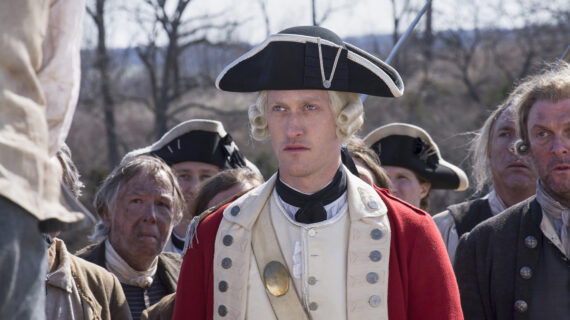
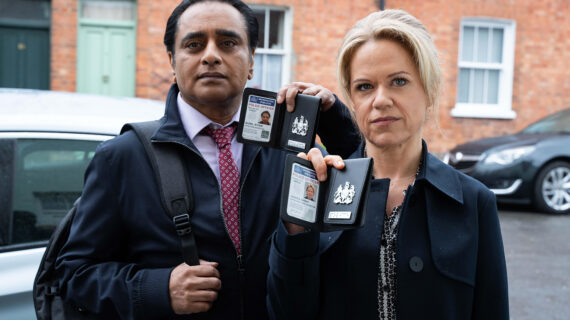
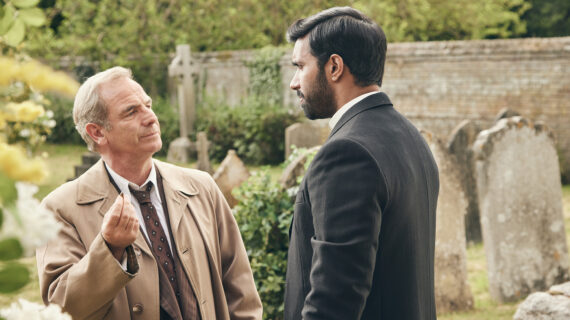
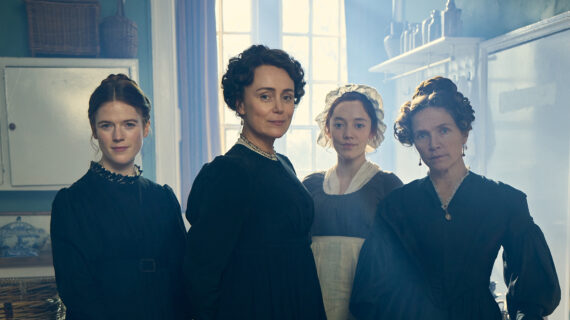
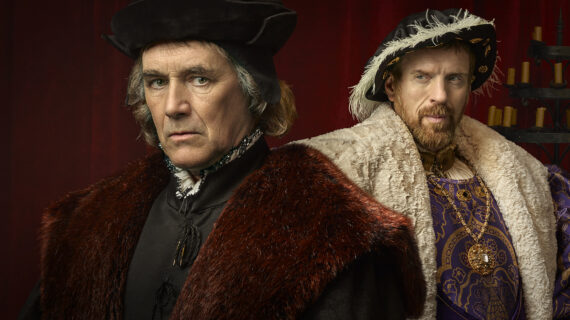
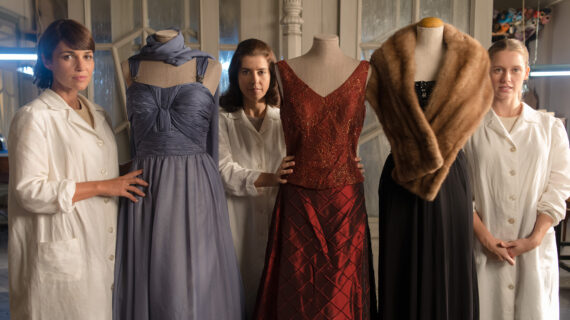
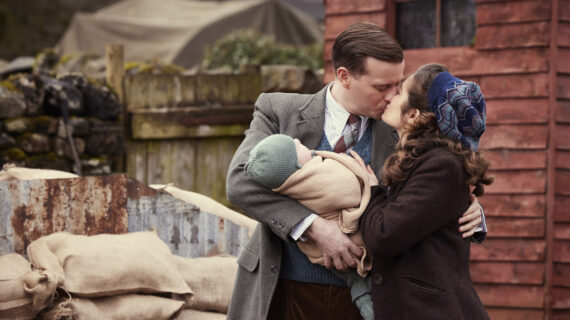
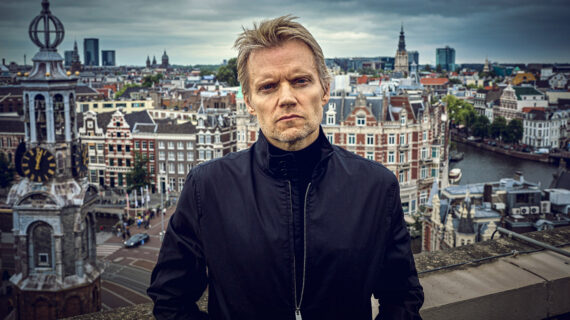
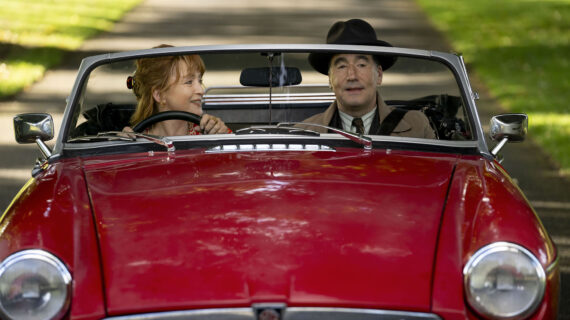
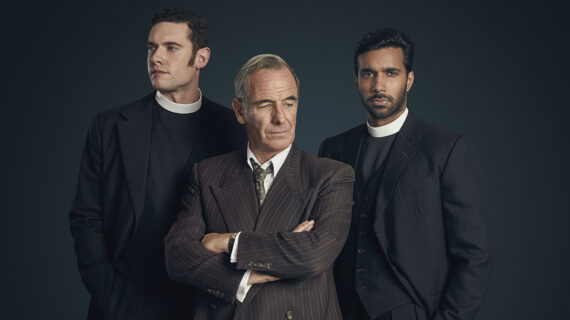
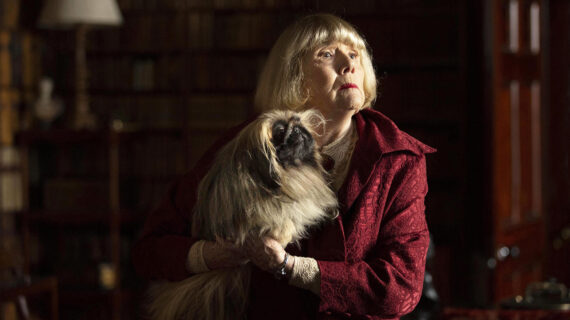

Follow Us